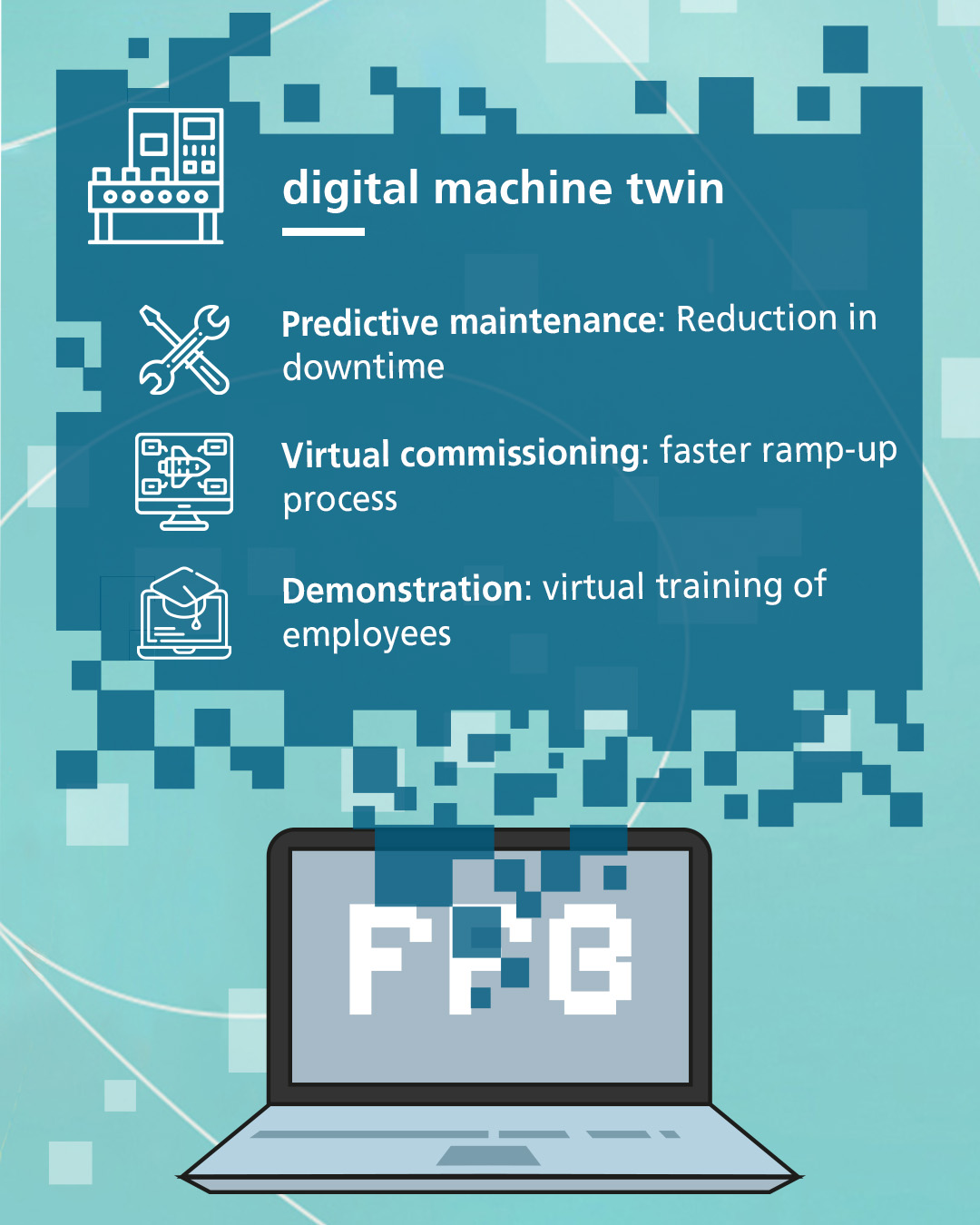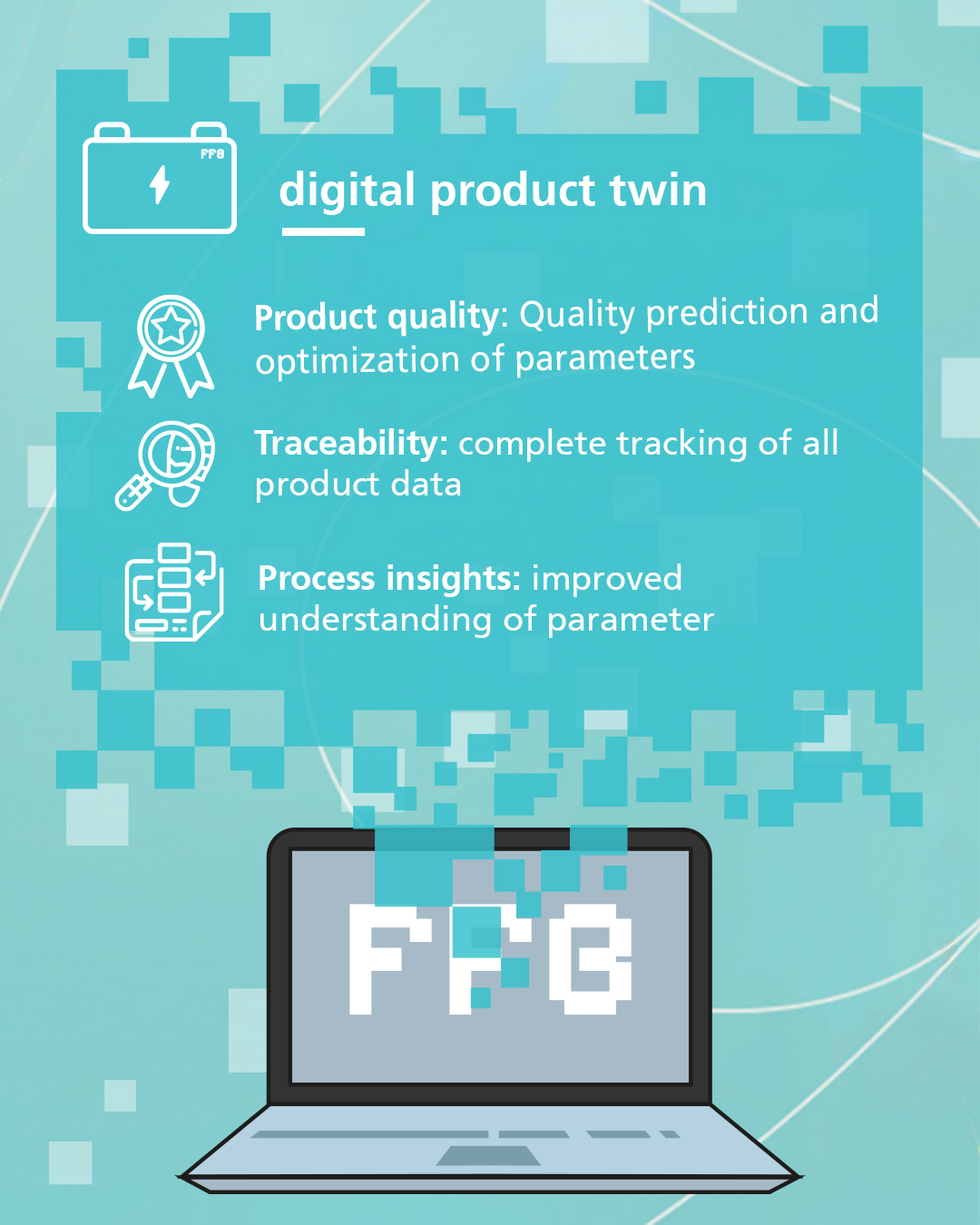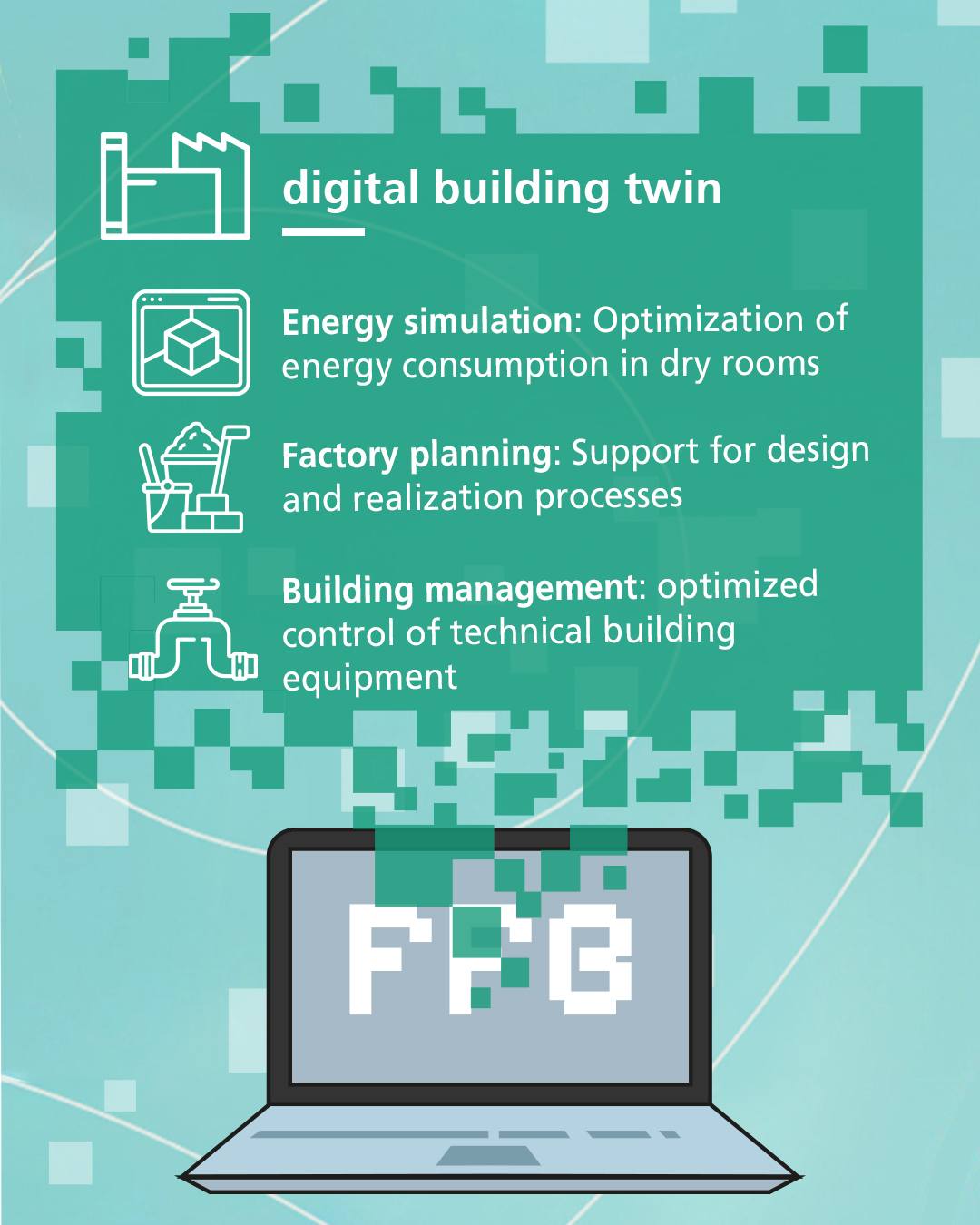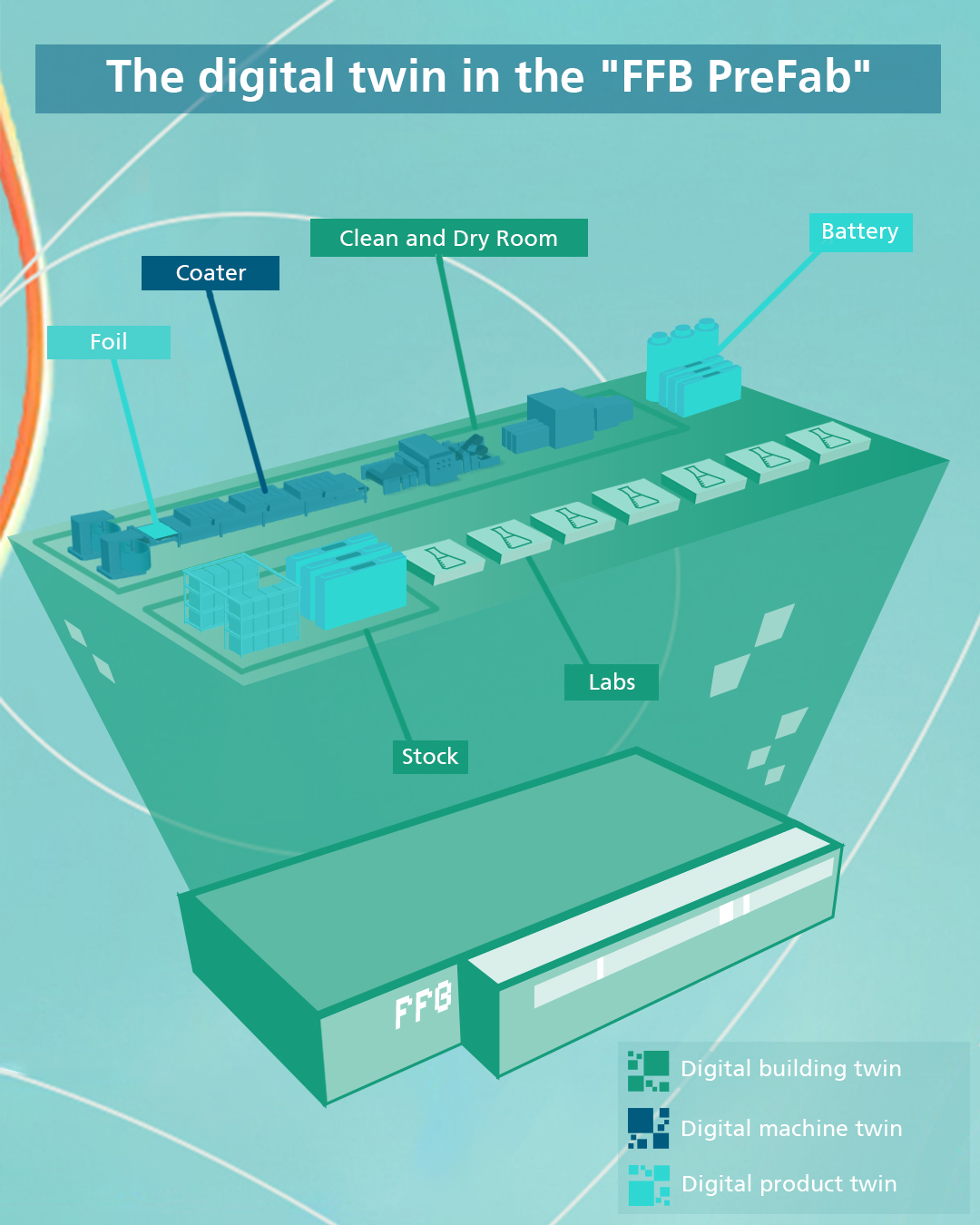The digital plant twin: linking production machines
At the digital plant twin, the main focus is on the production systems in battery cell production. It digitalizes all processes of the production systems in the factory. This allows, for example, the condition of machines to be monitored and decisions to be made based on this, reducing wear and tear, and shortening maintenance times. The efficiency of the plant is increased as the data can be viewed in a coherent manner. This leads to more economical and ecological production.
The digital product twin: virtual representation along the entire product life cycle
In contrast to the plant twin, the product twin collects all data and characteristics of raw materials as well as intermediate and end products, including the parameters of the manufacturing processes. This enables, for example, the traceability of trickling solids and flowing pastes. Currently, slurry paste, for example, is still produced in individual batches during mixing. The digital product twin can support a continuous mixing process. In addition, a digital product twin can be used to analyze the usage data of each individual battery in combination with the stored product data and thus influence the decision on the secondary reuse and recycling of these batteries.




